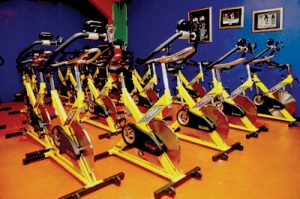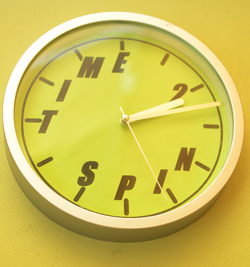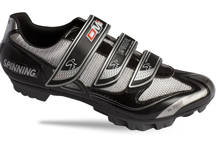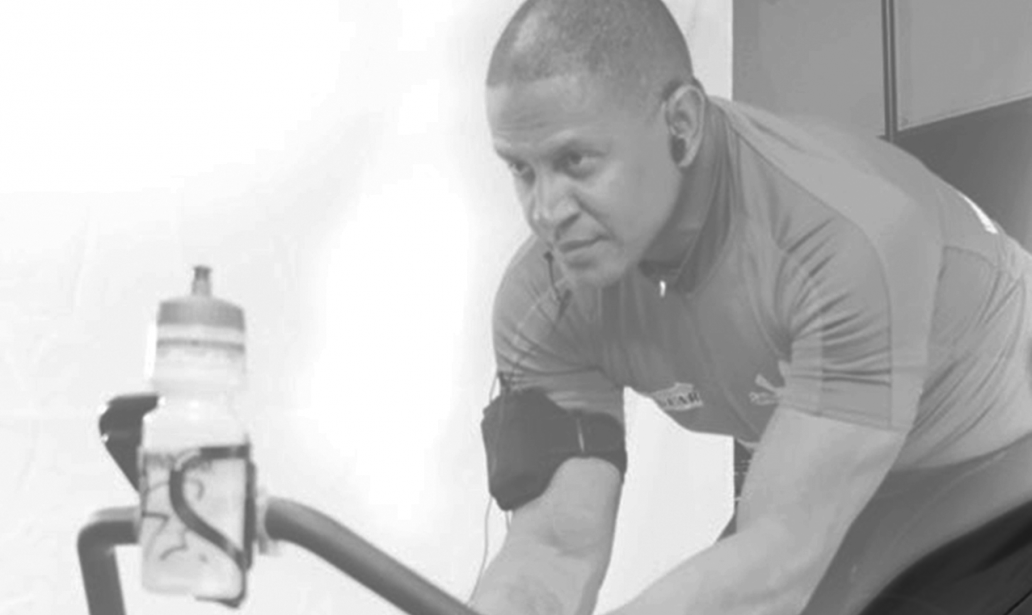Brian Superville has over 12 years of experience as a certified spinn instructor, and is quite well known in the industry throughout Trinidad and Tobago. Read more about Brian here.
If you’re new to spinning, here are a few tips Brian wants you to keep in mind:
1. Avoid the “bouncy spinn”
 Spinn is indoor cycling — in fact, it originated as a way for cyclists to simulate outdoor cycling during the winter months in the United States.
Spinn is indoor cycling — in fact, it originated as a way for cyclists to simulate outdoor cycling during the winter months in the United States.
While we have adapted to suit our purposes, cycling on the whole is not meant to be ‘hopping all about’, waving your arms, or ‘wining’ on the bike.
While the active, ‘bouncy’ class may look good, it’s not efficient and can even cause injury. Keeping a good form with a moderate to high amount of resistance makes you work harder, sweat more, and get fitter much faster.
2. Stretch!
Stretching is key to avoiding injury. Not stretching can result in serious injury during or after a class.
3. Re-hydrate
Drinking before, during and after a class is important — water is best, but some energy drinks can also work as well to replenish your fluids.
4. Don’t over-train
 Ideally, three to four classes a week of spinn is recommended, three if you are a newcomer. It is important to give time in between to rest, or to do other types of exercises so that your muscles can recover. You should not do legs and spinn on the same day — if you insist on doing weight training before or after you spinn, you can do upper body as this is not emphasised during the spinn class.
Ideally, three to four classes a week of spinn is recommended, three if you are a newcomer. It is important to give time in between to rest, or to do other types of exercises so that your muscles can recover. You should not do legs and spinn on the same day — if you insist on doing weight training before or after you spinn, you can do upper body as this is not emphasised during the spinn class.
If you are a serious spinner and want to veer away from weight training altogether, you can complement your spinn classes with TRX (suspension training using your own body weight) or kettle bell exercises to focus on your core. Pilates and yoga are also good alternatives that complement spinn well without requiring heavy lifting.
5. Adjust your bike properly
Generally, the height of your hip should be the height of your seat. Depending on the type of bike, the handlebar position will differ — it is up to you to find the comfortable position that does not put pressure on your back and allows for free movement of your limbs. When you come forward on the bike, your knees should not be too close to the bars.
6. Wear the gear
 If you’re serious about spinn, it would be wise to invest in spinn shoes — you will soon be able to tell the difference during a spinn class.
If you’re serious about spinn, it would be wise to invest in spinn shoes — you will soon be able to tell the difference during a spinn class.
Another good buy is a heart rate monitor, if your gym doesn’t already have them on their bikes. While these things aren’t cheap, they will be worth it in the long run.
7. Spinn early in the day
When you spinn later in the evening, your adrenaline is still spiked when you go to bed. Aim to spinn as early as you can — first thing in the morning if possible — so that you can be calm and ready for rest at night. Your body needs proper rest to recover, and if your heart rate is still high late at night, you will not be able to rest properly.
8. Protect your vital areas
Know yourselves! If your nether-regions are cringing every time you hop on a bike, make sure to wear protective cycling shorts (men AND women!) or padded seats to relieve this. It’s not just an issue of pain — you can be doing serious damage to yourself.
9. Ladies, be wary…
Some women experience body pains, cramping and fatigue due to their menstrual cycles, which can lead to a difficult spinn class. Monitor yourselves and look out for the signs — if you feel dizzy, it is best to stop or slow down until your recuperate. There is no shame in going slow or sitting out a class if you don’t feel up to it.
10. Wear proper underwear
Another tip for the ladies: no thongs! While you may want to be panty-line-free, best to keep that for outside of the spinn class. For the sake of your health, please wear proper underwear.

